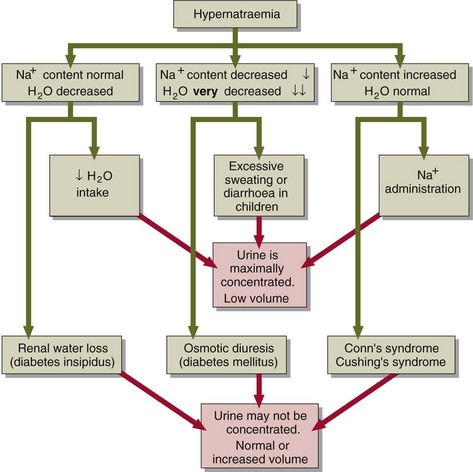10 Water and sodium loss can result in hypernatraemia if the water loss exceeds the sodium loss. This can happen in osmotic diuresis, as seen in the patient with poorly controlled diabetes mellitus, or due to excessive sweating or diarrhoea, especially in children. However, loss of body fluids because of vomiting or diarrhoea usually results in hyponatraemia (see pp. 16–17). The pathophysiological parallel to the administration of sodium is the rare condition of primary hyperaldosteronism (Conn’s syndrome), where there is excessive aldosterone secretion and consequent sodium retention by the renal tubules. Similar findings may be made in the patient with Cushing’s syndrome, where there is excess cortisol production. Cortisol has weak mineralocorticoid activity. However, in both these conditions the serum sodium concentration rarely rises above 150 mmol/L. The mechanisms of hypernatraemia are summarized in Figure 10.1.
Hypernatraemia
Water loss
Sodium gain
Basicmedical Key
Fastest Basicmedical Insight Engine




